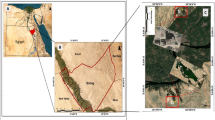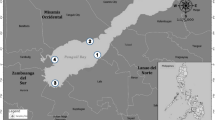Abstract
The suitability of two polychaete worms, Australonereis ehlersi and Nephtys australiensis, and three bivalves, Mysella anomala, Tellina deltoidalis, and Soletellina alba, were assessed for their potential use in whole-sediment toxicity tests. All species except A. ehlersi, which could not be tested because of poor survival in water-only tests, survived in salinities ranging from 18‰ to 34‰ during the 96-hour exposure period. No mortality was observed in any of the species exposed to sediment compositions ranging from 100% silt to 100% sand for 10 days, thus demonstrating the high tolerance of the five species to a wide range of sediment types. All species showed decreased survival after exposure to highly sulfidic sediments in 10-day whole-sediment tests. In 96-hour water-only tests, survival decreased, and copper accumulation in body tissues increased with exposure to increasing copper concentration for all species except A. ehlersi, which again could not be tested because of its poor survival in the absence of sediment. S. alba and T. deltoidalis were the most sensitive species to aqueous copper (LC50s of 120 and 150 μg Cu/L, respectively). All species tested were relatively insensitive to dissolved zinc up to concentrations of approximately 1,000 μg/L. In addition and with the exception of N. australiensis, all species accumulated significant levels of zinc in their body tissues. Whole-sediment tests were conducted over a 10-day period with copper-spiked (1,300 μg/g) and zinc-spiked (4,000 μg/g) sediments equilibrated for sufficient time to ensure that pore water metal concentrations were well below concentrations shown to have any effect on organisms in water-only tests. Survival was decreased in the bivalves T. deltoidalis and S. alba after exposure to copper-spiked sediments, and all species—except T. deltoidalis, in which 100% mortality was observed—accumulated copper in their tissues. Exposure to zinc-spiked sediments significantly decreased the survival of only one species, T. deltoidalis. Both polychaetes appeared to regulate concentrations of zinc in their body tissues with no significant uptake of zinc occurring from the sediment phase. Of the five species assessed in this study, T. deltoidalis was found to be the most sensitive to copper- and zinc-contaminated sediments, and based on commonly used selection criteria (ASTM 2002a, ASTM 2002b, ASTM 2002c) is recommended for development as test species in whole-sediment toxicity tests.
Similar content being viewed by others
Author information
Authors and Affiliations
Rights and permissions
About this article
Cite this article
King, ., Dowse, ., Simpson, . et al. An Assessment of Five Australian Polychaetes and Bivalves for Use in Whole-Sediment Toxicity Tests: Toxicity and Accumulation of Copper and Zinc from Water and Sediment. Arch Environ Contam Toxicol 47, 314–323 (2004). https://doi.org/10.1007/s00244-004-3122-1
Issue Date:
DOI: https://doi.org/10.1007/s00244-004-3122-1




